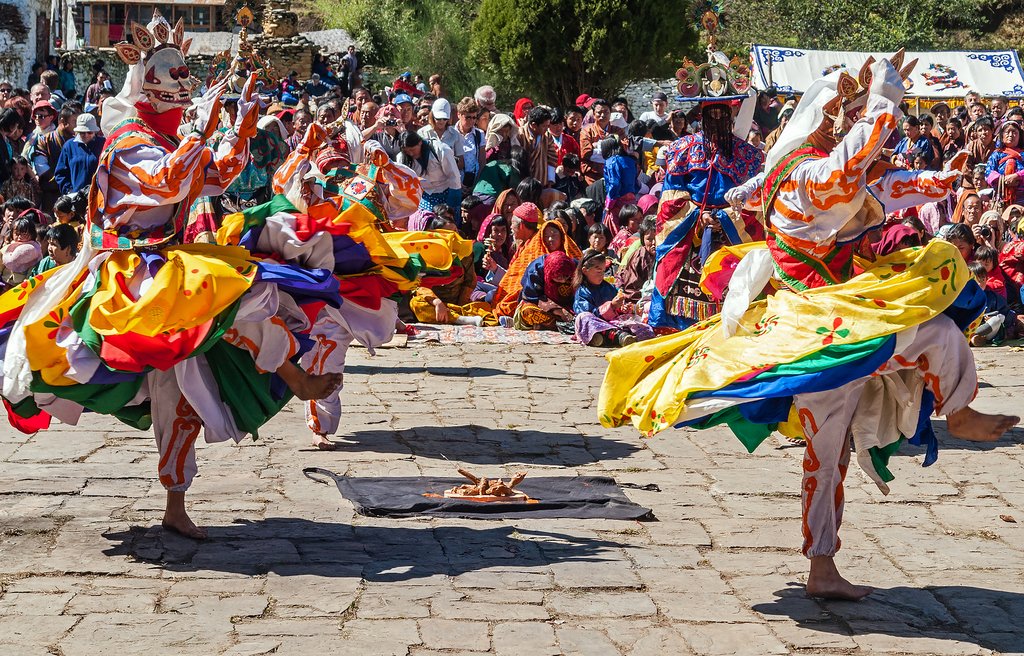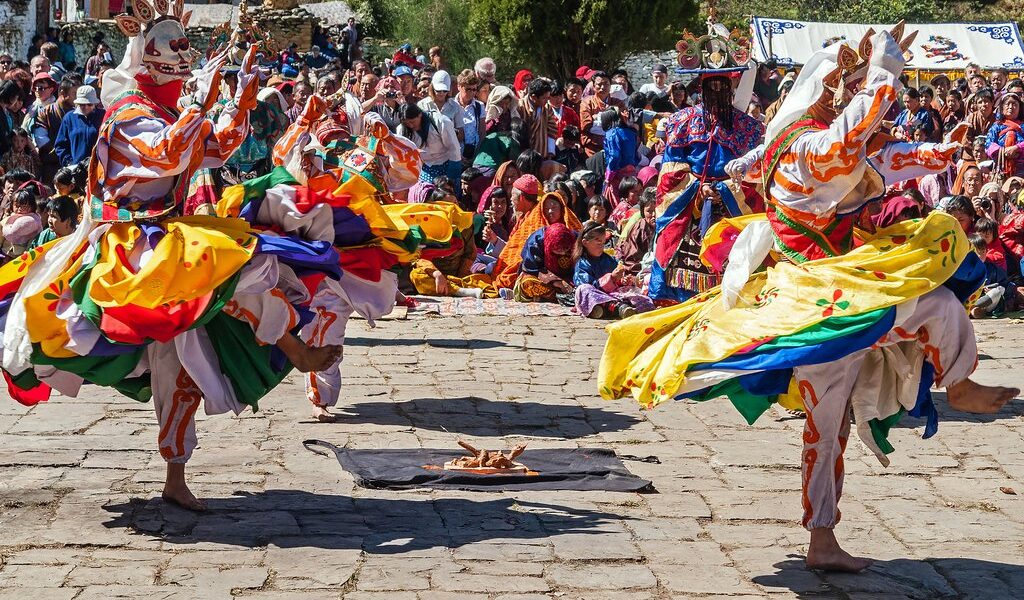
With restricted tourism numbers, Bhutan is never a busy destination. But there are distinct high and low seasons, and times when the weather is most favorable. So when is the best time to visit?
## Discovering the Enchanting Kingdom of Bhutan: A Seasonal Guide
Bhutan, a captivating and petite landlocked kingdom nestled amidst the majestic Himalayas, beckons travelers with its untouched natural beauty, meticulously preserved Tibetan Buddhist cultural treasures, an array of high-quality accommodation options, and, of course, its breathtaking trekking experiences. Renowned primarily for its towering peaks that pierce the sky, Bhutan possesses a remarkable diversity of landscapes and terrains, resulting in a varied and fascinating climate that shifts dramatically across the country.
In the southern reaches of Bhutan, you’ll discover lush subtropical plains, residing at altitudes as low as a mere 200 feet above sea level. Here, the climate is reminiscent of the steamy jungles found just across the border in neighboring India, offering a stark contrast to the alpine landscapes that dominate the rest of the nation. These warmer regions offer a glimpse into a different side of Bhutan, a side that flourishes with vibrant flora and fauna, a testament to the country’s ecological diversity.
However, it’s important to note that the majority of Bhutan lies at a considerable altitude. The principal towns of **Thimphu** and **Paro**, for example, are situated at elevations of 7,657 feet and 7,201 feet respectively, offering cooler temperatures and stunning panoramic views. Most visitors who embark on a journey to Bhutan are eager to explore the rolling hills, verdant valleys, and imposing mountains that define these higher-altitude regions. Engaging in trekking adventures in these areas is an experience best undertaken during the spring and autumn months, when the weather is most favorable. In fact, some trekking opportunities are exclusively available during these seasons, as the winter snow renders certain high passes impassable and potentially dangerous. The changing colors of the landscape in these seasons further enhance the trekking experience, creating unforgettable memories.
So, when is the optimal time to plan your visit to Bhutan? The answer to this frequently asked question hinges largely on your specific interests and desired activities. Each season in Bhutan offers its own unique advantages and allure. During the peak seasons of spring and autumn, the weather conditions are generally at their most pleasant, and the views are arguably at their most spectacular, allowing for optimal exploration and appreciation of the surrounding landscapes. However, it’s worth noting that prices for accommodations and tours tend to be higher during these popular times. In contrast, the winter and summer months may present challenges in terms of accessibility to certain areas due to rain and snow, but they also offer the advantage of lower prices, making it a more budget-friendly option for some travelers.
Ultimately, no season is strictly off-limits to travelers in Bhutan. The warm hospitality and genuine kindness of the Bhutanese people, coupled with the opportunity to experience unparalleled peace and tranquility, are available to visitors throughout the entire year. Regardless of when you choose to visit, you’re sure to be captivated by the unique charm and cultural richness of this remarkable kingdom.
## Spring in Bhutan: A Time of Renewal (March – May)
Springtime in Bhutan, spanning from March to May, is widely considered an exceptional season for exploration. It’s especially favored by those who are passionate about trekking. During this period, the air is usually crisp and clear, the sun shines brightly, and temperatures are comfortably warm without becoming excessively hot. The vibrant colors of spring further contribute to the overall appeal of this season.
A highlight of the spring season in Bhutan is the occurrence of several key festivals. Among these are the renowned *Tsechu* (also sometimes spelled *Tshechu*), which are religious festivals celebrated throughout the year to honor Guru Rinpoche, a revered figure in Tibetan Buddhism. These festivals are a vibrant tapestry of color and tradition, offering visitors a unique glimpse into Bhutanese culture.
During Tsechu festivals, colorful masked dancers, typically monks or local men, perform traditional folk dances at temples, monasteries, and *dzongs* (fortresses) located throughout the country. These performances are not only visually stunning but also deeply symbolic, conveying religious narratives and cultural values. In addition to witnessing the captivating performances and dances, visitors have the opportunity to admire and interact with the Bhutanese people, who dress in their finest traditional attire to celebrate these auspicious occasions. Two of the most prominent and eagerly anticipated Tsechu festivals are held in **Paro** and **Thimphu**.
Nature is also at its absolute finest during the spring months in Bhutan. Imagine trekking through enchanting rhododendron forests, where the landscape is adorned with a breathtaking array of red, pink, purple, and white blooms. This is truly an unforgettable experience that will leave you in awe of the natural beauty that Bhutan has to offer. In fact, there’s a specific trekking trail that runs through the heart of the country, thoughtfully designed to allow trekkers to fully immerse themselves in the beauty of these rhododendron forests. This trail is aptly named the **Gazamchu Rhododendron Trek**. Furthermore, a dedicated rhododendron festival is held each year in May at the **Royal Botanical Park** in **Lamperi**, which is conveniently located just a short drive from Thimphu.
## Monsoon Season: Lush Landscapes and Tranquility (June – August)
During the monsoon season, which typically spans from June to August, Bhutan’s countryside undergoes a remarkable transformation, becoming a lush and vibrant tapestry of greenery. While rain is a common occurrence during this period, it’s important to remember that it doesn’t usually persist all day, every day. Instead, precipitation tends to arrive in bursts, leaving ample hours in between for exploration and outdoor activities.
One of the significant advantages of visiting Bhutan during the monsoon season is that it attracts fewer travelers compared to other times of the year. As a result, prices tend to be lower, and you’ll have the unique opportunity to experience the country with a greater sense of solitude and tranquility. Bhutan boasts a collection of gorgeous boutique and luxury hotels, and during the off-season months, these establishments often offer considerably more affordable rates, making it an ideal time to indulge in a comfortable and luxurious stay.
However, it’s worth noting that the monsoon season is generally not considered the most favorable time for trekking. Access to certain routes may be difficult or even impossible due to heavy rainfall, trails can become muddy and slippery, and the views are often obscured by mist and clouds. To make the most of your time in Bhutan during the monsoon months, it’s generally recommended to focus on cultural attractions, sightseeing, and exploring the country’s rich history and heritage.
## High Season: Festivals and Trekking Adventures (September – November)
Autumn marks Bhutan’s high season, drawing the largest number of tourists to the kingdom. This popularity is well-deserved, as autumn offers an ideal combination of pleasant weather, stunning landscapes, and exciting cultural events, making it an excellent time for both trekking and festival experiences.
The **Thimphu Tsechu**, a major religious festival held every September, is one of the most significant Tsechus in Bhutan. Another notable event is the **Jambay Lhakhang Drup Festival**, which takes place in October. This spectacular festival features a captivating fire ceremony, where locals fearlessly run under a large, flaming gate. Later in the evening, masked dancers perform a ritual dance naked in the middle of the night. The purpose of this unique ritual is to bless infertile women with the ability to conceive children.
Autumn is also an ideal time for trekking in Bhutan, offering a wide array of options for travelers of all experience levels and fitness abilities. Depending on your preferences, you can choose from a variety of routes that range in difficulty and duration. One of the most challenging treks in the world is the **Snowman Trek**, which involves crossing nine passes above 15,850 feet and typically takes around 25 days to complete. For a shorter but still adventurous option, consider the **Jomolhari Laya Ghasa Trek**, which typically takes around two weeks. This route, often hailed as the most scenic in Bhutan, leads trekkers past alpine meadows, across high mountain passes, and through lush jungles.
## Low Season: Winter Charm and Wildlife Encounters (December – February)
During the winter months, Bhutan experiences a decrease in the number of travelers. This means you can take advantage of low-season prices on accommodations and tours. Bhutan’s charming lodgings can be particularly cozy during the winter, with inviting fireplaces and traditional hot stone baths to enhance your comfort and relaxation.
While high-altitude trekking may be impractical or even impossible in some areas due to the cold temperatures and potential for snow, shorter treks are still feasible. The skies are often a stunning, clear blue during the winter, providing excellent visibility and breathtaking mountain views. If admiring the majestic peaks is a priority for your trip, winter can be a surprisingly rewarding time to visit. Consider the **Punakha Winter Trek**, which meanders through villages, forests, and farmland without reaching excessively high altitudes.
Furthermore, if you’re interested in a nature-focused tour, winter is the best time to visit the southern **Manas National Park**. The park’s altitude is relatively low compared to the rest of Bhutan, ranging from just 200 to 360 feet above sea level. Located near the border of India, **Manas National Park** is home to a diverse array of wildlife, including tigers, rhinos, elephants, and leopards, offering a unique opportunity to witness these magnificent creatures in their natural habitat.
B-172

